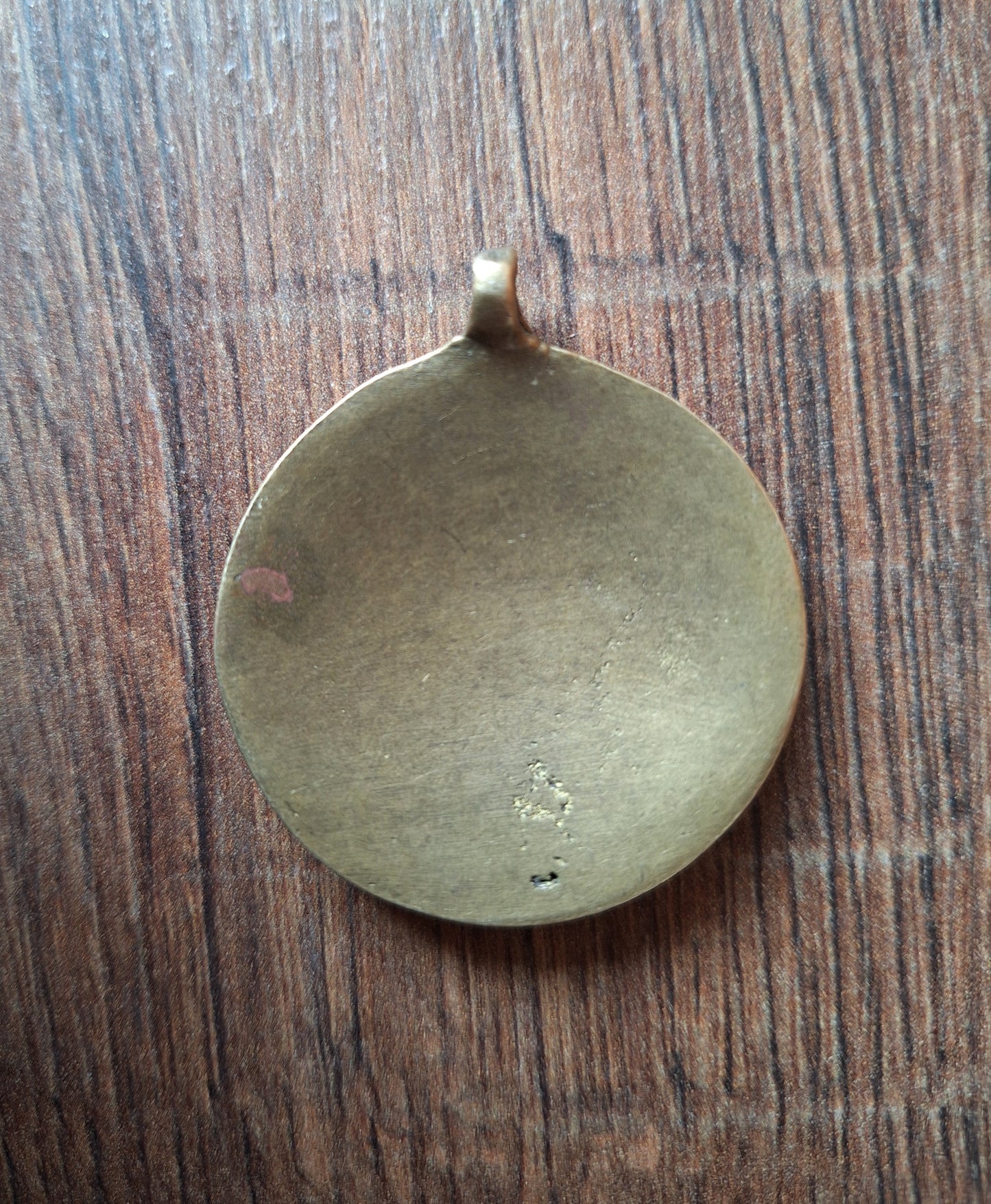Seawolf Shop
Vintage Nepalese melong Aum symbol and skulls 42 millimeters
Vintage Nepalese melong Aum symbol and skulls 42 millimeters
Couldn't load pickup availability
Share
Vintage bronze mirror from Nepal with a diameter of 42 millimeters (measured without the eyelet) and a weight of 21 grams. In Nepal, mirrors such as these are called 'melong'. They are traditionally often worn on the belt, instead of around the neck.
Design characteristics:
In the center the symbol for the (mantra)word "Aum" can be seen. This symbol and its sound, when spoken as an individual seed mantra or as part of a bigger mantra is said to be the all encompassing cosmic vibration of the universe. It represents all times, all awareness of times and the overtaking of time itself. When recited, it activates and energizes all the chakra's.
All around the edge, depictions of little human skulls can be seen, a symbol very prominent in the Himalayan regions influenced by Tibetan Buddhism, and with a very complex and deep symbolism.
On the one hand it can be said that the symbol of the skull (of course) refers to death; it is a powerful reminder of the fact that all our lives will simply end one day. The symbol of the skull is thus used in all kinds of meditative practices to contemplate on this inevitabilty and also on the other side of this medal; how important it is to live your life in the best possible and most compassionate of ways.
On a more metaphorical level, contemplating on the image of the skull also is a powerful practice in cutting through the bonds with one's own ego and the identification with the physical body. It takes us to the limits of human knowledge and helps to gain insight in the buddhist concept of 'Emptiness', which doesn't mean 'nothing-ness', but actually quite on the contrary refers to the true nature of the universe and reality; the endless, ultimate emptiness in which all possibilities exist.
Read more about the origin, design and usage of (shamanic) mirrors in the general description of our webshop collection "Mirrors and Melongs".











